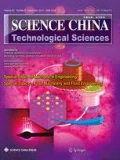Abstract
Deepwater offshore structures such as semi-submersible platforms suffer powerful ocean waves due to their location and site condition. The long distance away from the shore also brings many difficulties to energy supply for the platform operation. How to reduce the response of the platform and convert the wave energy into electrical power is a meaningful topic. In this paper, a tuned heave plate system (THP) is presented and designed to be employed on a semi-submersible platform for heave motion suppression and energy harvesting. This THP system is composed of spring supports, a power take-off system (PTO), and a heave plate. The PTO system is a permanent magnet linear generator (PMLG), which could directly convert the kinetic energy of the heave plate into electronic power. The stiffness of the spring supports is designed based on the principle of the tuned mass damper (TMD). The numerical model of the platform and the THP system is established according to the hydrodynamic analysis results of the platform. The model is tested and modified by scale model tests on the platform in the wave tank. A parameter study, including the size, tuned period, and damping ratio of the THP system, is conducted systematically based on the numerical model. The optimal parameters of the THP are selected due to the maximum heave motion reduction under severe wave conditions in South China Sea. The performance of the semi-submersible with and without the THP system under different wave conditions is analyzed. It is demonstrated that this novel tuned heave plate system could reduce the heave motion of the semi-submersible platform significantly and generate considerable power, which makes the THP system have a broad prospect for development.
Similar content being viewed by others
References
Cermelli C, Roddier D, Busso C. MINIFLOAT: A novel concept of minimal floating platform for marginal field development. In: The Fourteenth International Offshore and Polar Engineering Conference, Toulon: International Society of Offshore and Polar Engineers, 2004
Murray J J, et al. Two dry tree semisubmersible designs for ultra deep water post-Katrina Gulf of Mexico. In: ASME 2008 27th International Conference on Offshore Mechanics and Arctic Engineering, Estoril: American Society of Mechanical Engineers, 2008
Chakrabarti S, Barnett J, Kanchi H, et al. Design analysis of a truss pontoon semi-sub-mersible concept in deep water. Ocean Eng, 2007; 34: 621–629
Mills T, Chen C Y. Deep draft semi-submersible offshore floating structure. 2006, Google Patents
Frahm H. Device for damping vibrations of bodies. 1911, Google Patents
Soong T T, Dargush G F. Passive Energy Dissipation Systems in Structural Engineering. Wiley, 1997
Spencer Jr B, Nagarajaiah S. State of the art of structural control. J Struct Eng, 2003; 129: 845–856
Housner G W, Bergman L A, Caughey T, et al. Structural control: past, present, and future. J Eng Mech, 1997; 123: 897–971
Xu H B, Zhang C W, Li H, et al. Real-time hybrid simulation approach for performance validation of structural active control systems: a linear motor actuator based active mass driver case study. Struct Contr Health Monitor, 2014; 21: 574–589
Kourakis I. Structural systems and tuned mass dampers of super-tall buildings: case study of Taipei 101. Dissertation of Doctor Degree. Boston: Massachusetts Institute of Technology, 2007
Xu H B, Zhang C W, Li H, et al. Active mass driver control system for suppressing wind-induced vibration of the Canton Tower. Smart Struct Syst, 2014; 13: 281–303
Zhu S, Shen W A, Xu Y L, Linear electromagnetic devices for vibration damping and energy harvesting: Modeling and testing. Eng Struct, 2012; 34: 198–212
Ali S F, Adhikari S. Energy harvesting dynamic vibration absorbers. J Appl Mech, 2013, 80: 041004
Tang X, Zuo L. Simulation and experiment validation of simultaneous vibration control and energy harvesting from buildings using tuned mass dampers. In: American Control Conference (ACC), San Francisco: IEEE, 2011
Polinder H, Damen M E, Gardner F. Linear PM generator system for wave energy conversion in the AWS. IEEE T Energ Convers, 2004; 19: 583–589
Brekken T K, Von Jouanne A, Han H Y. Ocean wave energy overview and research at Oregon State University. In: Power Electronics and Machines in Wind Applications. Lincoln: IEEE, 2009
Yeung R W, Peiffer A, Tom N, et al. Design, analysis, and evaluation of the UC-Berkeley wave-energy extractor. J Offshore Mech Arct, 2012, 134: 021902
Liu K, Zhu H, Ou J P. Application of TMD in heave response control of semi-submersible platforms (in Chinese). Eng Mech, 2011; 28: 205–210
Zhu H, Ou J P, Zhai G J. Conceptual design of a deep draft semi-submersible platform with a moveable heave-plate. J Ocean Univ China, 2012; 11: 7–12
Tao L, Cai S. Heave motion suppression of a Spar with a heave plate. Ocean Eng, 2004; 31: 669–692
Tao L, Dray D. Hydrodynamic performance of solid and porous heave plates. Ocean Eng, 2008; 35: 1006–1014
Zhang F, Yang J, Li R, et al. Effects of heave plate on the hydrodynamic behaviors of cell spar platform. In: 25th International Conference on Offshore Mechanics and Arctic Engineering, American Society of Mechanical Engineers, 2006
Cummins W. The impulse response function and ship motions. 1962, DTIC Document
Falnes J. Ocean Waves and Oscillating Systems: Linear Interactions Including Wave-Energy Extraction. Cambridge: Cambridge University Press, 2002
Tucker M J, Pitt E G. Waves in Ocean Engineering. Elsevier, 2001
Author information
Authors and Affiliations
Corresponding author
Rights and permissions
About this article
Cite this article
Liu, K., Ou, J. A novel tuned heave plate system for heave motion suppression and energy harvesting on semi-submersible platforms. Sci. China Technol. Sci. 59, 897–912 (2016). https://doi.org/10.1007/s11431-016-6055-9
Received:
Accepted:
Published:
Issue Date:
DOI: https://doi.org/10.1007/s11431-016-6055-9



